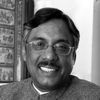Last week, this column focused on what could be the reasons why Indians today are heading some of the top global firms. To further explain this unprecedented phenomenon, I received considerable feedback, with many valuable views. Two of the possible reasons I had mentioned but could not dwell upon in detail were our aptitude for logic and mathematics, and our instinctive ability to classify disparate elements into a pattern.
PREMIUM Scholars of ancient India attest to Indians' prowess of mathematics. One scholar described it as an "intuitive insight into the behaviour of numbers",(Representational image)
There is little doubt that an ancient tradition of excellence in mathematics existed in India. The Indus Valley Civilisation (circa 2500 BCE), used a system of weights and measures that followed precise ratios and showed a basic awareness of the decimal system. The civilisation was unique for its geometrical planning of cities as well.
In Vedic times, the building of altars required detailed arithmetical and geometrical calculations. The Shulba Sutras are said to include the oldest known formulation of the Pythagoras theorem, developed in the context of Vedic altar building. The Surya Siddhanta, a Sanskrit text written sometime around the beginning of the Common Era, calculated that the earth is spherical, and gave near-accurate measurements of the earth and moon’s diameters. As far back as 500 BCE, the Jyotish Vedanga was using sophisticated methods of calculation to fix the position of the new and full moon and other astronomical inferences. According to renowned astronomer Carl Sagan, "Hindu cosmology gives a timescale for the earth and the universe which is consonant to that of modern scientific cosmology".
In the medieval period, there were legendary astronomer-mathematicians like Aryabhata I (499 CE), his pupil Latadev (505 CE), Varahamihira (550 CE), Brahmagupta (6th century CE), and Aryabhata II (950 CE). Aryabhata I, for instance, had calculated that the earth revolves around the sun, about a thousand years before Galileo in Europe was persecuted for the same claim. Brahmagupta is credited with developing a symbol for the operation of ‘zero’, which is a dot underneath numbers. Aryabhata II then used it extensively in the decimal system.
In fact, it is generally accepted that mathematics emerged as the single greatest contribution of India to the world of science. For long the Arab word for mathematics was Hindsat, ‘the science of India’. The Syrian astronomer-monk, Severus Sebokht, in the 7th century CE, wrote in awe of the rational system of mathematics of Indians, and of 'their method of calculation which no words can praise strongly enough’. It is not unreasonable to infer that part of this rich mathematical legacy would have percolated to the skill banks of ordinary people, particularly since the study of mathematics was linked to areas like astrology, of interest to the common person.
This must have been particularly noticeable to foreigners, who could make comparisons with their own people. For instance, J Fryer, a traveller from Europe in the 17th century, had this to say about Indians: "Arithmetic being the most popular science is best understood by them, to which they have a natural propensity, and will in a trice without the help of a pen or ink cast up the most difficult sums, and never pause upon it". AL Basham, one of the greatest scholars on ancient India, endorsed this view in his book A Cultural History of India: "Indians have an intuitive insight into the behaviour of numbers, and their arrangements into patterns and series".
In more recent times, PV Indiresan, former director of the prestigious Indian Institute of Science in Chennai, made the same point. According to him, in exploring a paradigm, Indians ‘do not proceed the way Westerners do, step by step. Instead of applying deductive logic, through painstaking scholarship to extend the paradigm to its breaking point, they look for inspiration through inductive logic’.
Such an approach seeks instinctively, and often at the cost of conventional scientific rigour, to discover the underlying principle behind the mere accumulation of facts, mirroring, as Richard Lannoy, in his highly researched and readable book, The Speaking Tree: A Study of Indian Culture and Society, says ‘the unified field awareness of traditional Indian thought processes’.
I know that many will evaluate the above as a generalisation lacking empirical connectivity between the remarkable success of some Indians today in the best businesses of the world, and our past heritage. But we should never lose sight of the fact that the past, the present and the future are not watertight compartments, but a seamless continuity, where one affects the other, often in ways that are unknown and unacknowledged by the beneficiary.
As a Russian professor once told me, ‘Those who forget their past are plain stupid’. To my mind, what we are today, is also in many ways what we were yesterday. Yes, it is true, that legacies are often hidden in the mists and travails of time, and that equally, a few success stories cannot hide the fact that too many Indians even today, even if they have the talents, do not have the opportunity to optimize them.
In the next edition of ‘Just Like That’, I will deal with our abilities of classification, of finding a pattern in the massive amounts of data that now engulfs us.
Pavan K Varma is an author, diplomat, and former Member of Parliament (Rajya Sabha). Just Like That is a weekly column where Varma shares nuggets from the world of history, culture, literature, and personal reminiscences with HT Premium readers. The views expressed are personal





















 Toi Staff
Toi Staff Gideon Levy
Gideon Levy Belen Fernandez
Belen Fernandez Andrew Mitrovica
Andrew Mitrovica Mort Laitner
Mort Laitner Rami G Khouri
Rami G Khouri Ali Fathollah-Nejad
Ali Fathollah-Nejad Nikkei Editorial
Nikkei Editorial
